Peer Feedback in Formative Learning
Valentina Batagelj is a teacher at the Frana Erjavca Primary School in Nova Gorica, Slovenia. Following the practise of formative learning, she is dedicated to students being heard and being a part of the learning process. E-mail: valentina.batagelj@os-franaerjavca.si
Introduction
Teaching the students to provide their point-of view, opinions, advice, solutions is often the teacher’s ultimate goal. One of the ways to do this is by using peer feedback among the students. At Fran Erjavec Primary School Nova Gorica in Slovenia, students take part in formative learning which offers the students the platform to be active co-creators of both the learning process and evaluation. The article presents the theory of giving and receiving peer feedback and presents how the process can be carried out in the classroom. Student’s active role can also support the teacher in grading the students, making the process shorter and the student being responsible in making the decision what grade s/he or the schoolmate will get.
Feedback
In his research based on a two-year project involving 36 teachers, Black (2003) created a manual with ideas and advice for improving formative assessment in the classroom. The starting point of this book was the realisation that research studies worldwide proved that formative assessment raises students' test scores. In his work, he states that students accept their peer’s feedback more freely and naturally than that given by the teacher. As one of the advantages, he says that their peers use more everyday language which they prefer to the language used by the teachers in schools.
Crooks in Clarke (2015) stated that feedback has the greatest motivation when:
- Focused on the quality of the student’s work and not comparing it to others,
- Precise advice how to improve his work,
- The student has the possibility to make improvements from his earlier works.
Mateja Peršolja (2020) who is an expert of formative learning in Slovenia and the leader of the formative movement in Slovenia stresses that feedback must be part of the entire process of learning and must not be equated with grades, which should come only at the end of the learning process.
Grading
The research in the project LEARN asked the students between 3 and 13 years old how they felt about grading. Clarke (2015) reports that students:
- want to get an oral feedback,
- often do not know how to use the feedback,
- occasionally think that the teacher has not seen their hard work,
- are often confused because of their hard work and the grade they get,
- feel they were not given enough time,
- find it hard to read the teacher’s handwriting,
- don’t have enough time to improve their work because the teacher is in a hurry,
- think grading is for the teacher to see how much they know, and not for them.
Mateja Peršolja (2020) stresses that being graded does not improve the student’s achievement, knowledge and improve his responsibility and interest in work. The grade can stop the process of learning. It is focused on the past that can no longer be corrected. When the students are given back their exams, they usually compare themselves with their fellow students and complain about having one point too little to get a higher grade, or come to the teacher to ask for a higher grade. Mateja Peršolja also states the importance of giving a detailed feedback about their work. This stimulates them to ask their classmates or their teacher to support them in learning what they have not yet learned. She states the importance of having clear goals of every evaluating process.
An example from the classroom
How can one make the most of these expert’s advice on giving feedback and grading when entering the classroom? At the Fran Erjavec Primary School, the students from the 7th grade learned about how verbs are used in the Past Simple Tense – both regular and irregular verbs. After spending a few months practising the forms, both affirmative, negative and question forms, and reading detective stories and memoirs, the students came to a point to decide how to grade how much they have learned about this topic. After brainstorming, the students have decided to make a timeline of their childhood. Keeping up with the rules of the formative learning, all the work was done in school. It took us 10 lessons to finish the process. In the first lesson, they decided on the goals. They decided on an oral presentation about their childhood. The most important thing for all of them was to include 10 photographs and to use at least 3 sentences for each photograph. The students asked for a model of how the final product should look like. I brought a text from the textbook Touchstone 7.
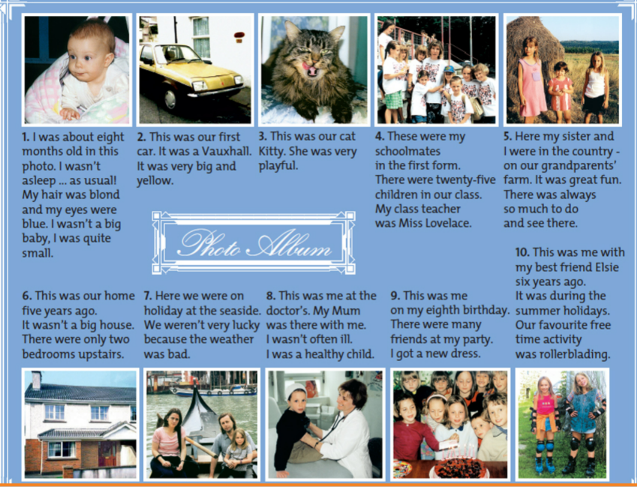
Picture 1: A model of excelency.
The next step was setting the criteria for the oral presentation. First, they stressed the importance of having all the work done at school. This means that they are all equal within the process and they do not get support from home. More than that, the final product truly presents their knowledge and efforts, and not their parent’s, family’s or older friend’s effort.
group of students have been learning English for 5 years and every year, they build on what is important in giving an oral presentation, writing a written composition or reading a text. We never include every possible criterion in oral presentations. We choose a few, so they can focus and work on those in order to avoid being overwhelmed. In this presentation they said they should focus on using rich vocabulary and forming sentences with “but” and “and”. Their pronunciation, intonation should be correct and they should keep eye contact with their classmates while speaking. We make sure to gradually spread the criteria from year to year, and focus on different things throughout the years.
We wrote down the criteria in a form of a chart and divided each section into three groups: if the student does not yet meet the criterion, if the person accessing is not sure if his classmate meets the criterion, or if he agrees that his classmate meets the criterion.
Each student was given five of the charts bellow. In the line above the chart, they wrote their classmate’s name and surname.
Tick what is true for the presentation of your classmate ___________________ (name and surname)
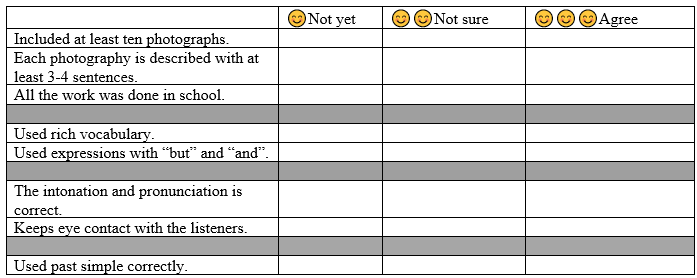
After writing the description of the 10 photographs, each student was given five of the above charts. Their task was to listen to five classmates and provide feedback.
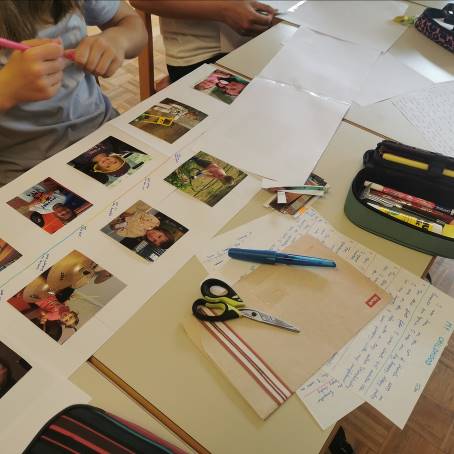
Picture 2: The texts are ready. The students create the timeline with the photos from the student’s childhood.
In this position, they were given the power to show the knowledge about what they have already learned on the topic and they had to make sure they knew all the criteria in the chart in order to grade the classmate.
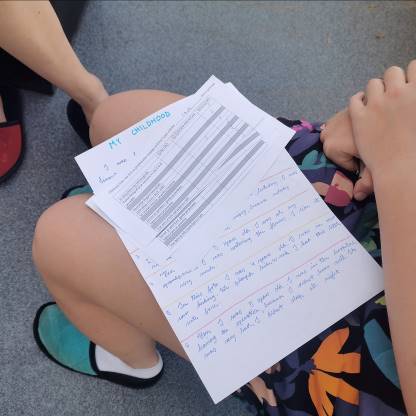
Picture 3: A student evaluates her classmate with the help of the chart.
This provided the students with five peer evaluations. In comparison of only being given one evaluation by the teacher and not having the possibility to improve on their work, this offers the student room to improve on their work After this, they individually brought five charts to me. Based on the chart, we discussed what needed to be improved based on what the classmates suggested. They were given time to improve their work based on the feedback. Having already spoken to five classmates, they were not nervous about later-on presenting their text in front of the class. This also shortened the time that me, as a teacher, spent on providing written feedback of the text.
Students worked at different speeds. Having the possibility of having additional classroom outside of school which is just across the hall, those students who had already completed the text went outside and started the process of sharing their texts with their classmates. Later on, when they had finished, they could support other classmates, who needed more time to finish their work.
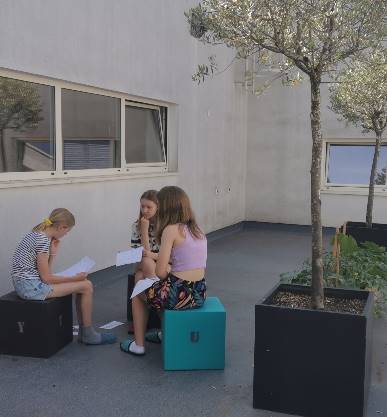
Picture 4: Working in groups, sharing their texts and being given a feedback by the peers.
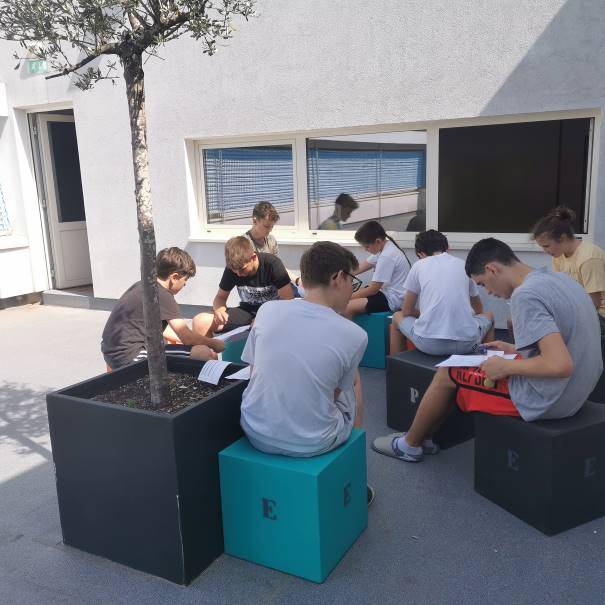
Picture 5: Other classmates joining their peers.
All the students’ motivation was high. Although the formative learning has been used in the school for one year in English, Geography, Slovene and History, this group of students are now already used to this kind of work. Even the students with additional assistance were motivated to complete and improve on their work, some of them with the support of their classmates, who had already achieved all the goals set for the lesson and already enter the phase of being a mentor – an expert on the topic.
After the feedback by their classmates, they were able to improve on their work. Further on, they were also given the possibility to get my feedback again prior their oral presentation.
Conclusion
The use of peer feedback within the process of formative learning supports the students to be active and responsible within a learning process. At the Fran Erjavec Primary School, peer feedback has proven to be a successful method, which will be used in the future as well. In the 8th and 9th grade, we will expand it by stressing that the student, who is being given the peer feedback, can either accept the opinions given by others, make use of it or not and thus develop the students into becoming critical thinkers and leaders. This will be of utmost importance in the future in the world where the amount of information they come across on daily basis is extremely big and choosing the right one will be one of the most difficult things.
References
Black, P., Harrison, C., Lee, C., Marshall, B., William, D. (2003) Assessment for learning, Open University press
Clarke, S., (2015), Enriching Feedback in the primary classroom, Hodder Education
Peršolja, M., (2020), Formativno spremljanje znanja v praksi, Demago d.o.o.
Skela, J., Gvardjančič, A., Marguč, D., Touchstone 7, Založba Zagorje
Please check the Pilgrims f2f courses at Pilgrims website.
Please check the Pilgrims online courses at Pilgrims website
Telegram as a Tool for Remote Teacher Training, Juana Sagaray and Maria Teresa Fernandez, Venezuela, Wendy Arnold, United Kingdom